On every continent around the globe, people can visit wondrous caverns carved into existence by the long-term power of moving water, the shifting of the Earth’s crust, or the melting of massive glaciers. These caves are almost alien to humans since most of us aren’t accustomed to squeezing into tight corridors underground or underwater, surrounded by jagged rocks and spiky mineral deposits, in the damp darkness of the world’s most forgotten pockets. For good reason, too, since exploring these caves can come with serious risks.
These natural tunnels, often tight and difficult to navigate, are prone to collapse since Mother Nature cares very little for the structural safety of such places. Feet of rock, ice, water, or dirt can insulate these areas from cell phone signals and other electromagnetic frequencies. Calling for help or pinpointing the position of trapped explorers can be nearly impossible. Some of these caves are filled with environmental dangers so powerful that unprepared humans could lose their lives in a matter of minutes without the most astute preparations. Sure, there are caves marketed as tourist attractions, but others are only fit to be explored by properly trained professionals. Here’s the list of the most dangerous caves in the world that only those professionals should be exploring.
The Ice Caves at Mount Rainier, United States
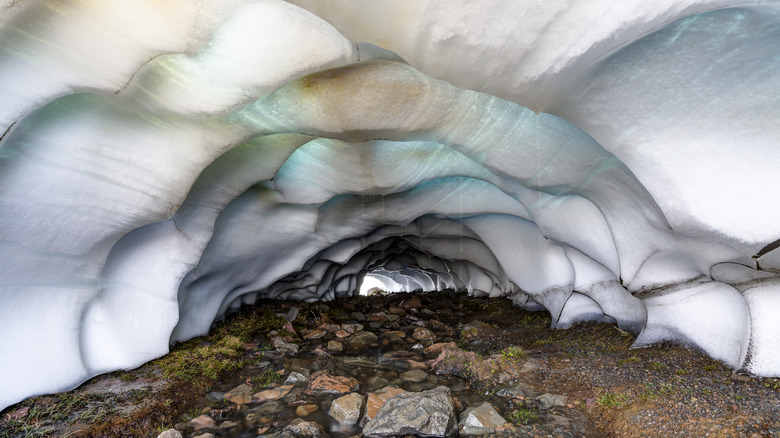
Visible on the Washington skyline, located south of Tacoma, is one of the most stunning mountains in the United States. Mount Rainier is unique for being both an active volcano and having the most glacier mass of any mountain in the lower 48, and hiding within those glaciers is a series of beautiful ice caves too dangerous for the general public to traverse safely.
Imagine standing in a tunnel made of pure rainbows that miraculously reflect assorted colors of light like motley ocean water. The beauty would be astounding as long as you aren’t claustrophobic, and at an early time, you may have been able to witness this sight firsthand with only a mild possibility of mortal danger. Pictures of these wondrous structures have prompted visitors to seek them out. Unfortunately, with climate change and rising average global temperatures, these caves have become hazardous for sightseers and should be generally avoided, and that’s outside of the inherent dangers presented by visiting an active volcano. The risks involved are high enough these days that the Park Service has issued warnings against visiting due to fatal possibilities of spontaneous collapse, which has happened with similar caves nearby. They also warn against the possibility of hypothermia, given the frigid air inside the glacier caves.
Plura Cave, Norway
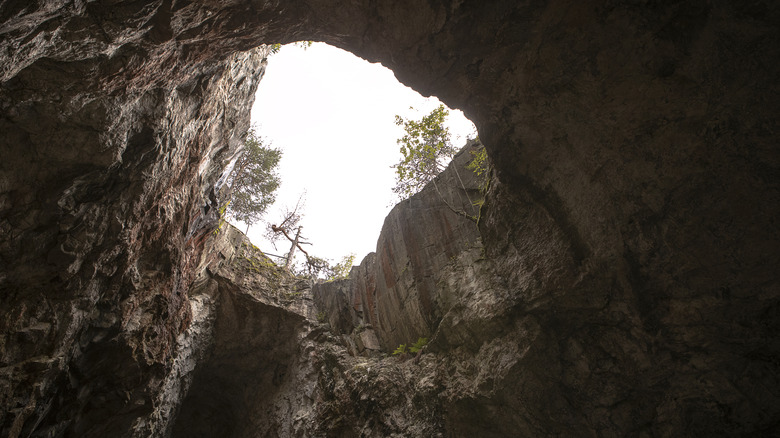
Plura Cave is under a small lake in the Plurdalen Valley. The primary way to access this cave system (and the only way to swim through the underwater sump) is by diving a half kilometer below the often-icy water’s surface. As you might rightly assume, this makes the cave system extremely dangerous. Being a trained diver is necessary, but it only mitigates part of the risks involved with this exploration, as was highlighted in 2014 when two divers lost their lives in Plura Cave after one got stuck in a narrow section of tunnel. The second diver likely panicked at the sight of his colleague, which could’ve led to carbon dioxide poisoning due to rapid breathing. Three other divers were treated for decompression sickness.
Two deaths might not seem like a lot for one of the most dangerous caves, but in this case, it wasn’t only the deaths that alluded to the hazardous nature of these underwater tunnels. The authorities, whose responsibility it was to retrieve the remains of the deceased divers, deemed the caves too dangerous for them – these trained professionals — to undergo the retrieval. Instead, friends of the unfortunate divers took the task upon themselves — refusing to leave their compatriots at the bottom of the lake — and rescued their remains so they could have a proper send-off with their loved ones.
Jacob’s Well, United States
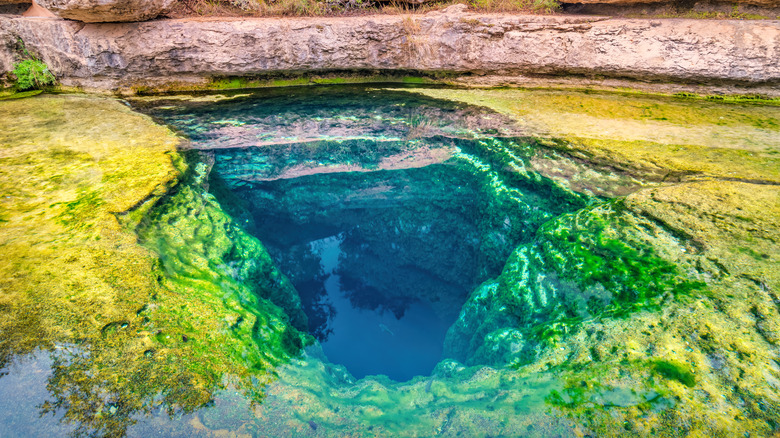
Benedek/Getty Images
Jacob’s Well, located near Wimberley, Texas, doesn’t look particularly dangerous. In fact, it looks like a decent swimming hole, with clear blue water no bigger than an oversized family hot tub, but looks can be deceiving. The Well isn’t really a well at all but rather a sinkhole fed by a natural spring. It has all the makings of a fun vacation as long as you aren’t diving into the deadly underwater cave system below.
The cave system below Jacob’s Well has been officially closed to the general public for some time and is only legally accessible by permit, which you aren’t going to get unless you’re a properly trained researcher, and for good reason. This cave has been the death of at least 12 divers. The caves are now covered by metal grating to prevent recreational divers from taking on more than they can handle. Unfortunately, adrenaline junkies can’t always resist their risky urges and have been known to remove the grate to illegally regain access to the graveyard caves on the other side.
The caves at Jacob’s Well have narrow passages that are difficult to navigate in the true darkness, which can become impossible if the silt on the cave bottom is disturbed. The strong current of water running through the caves and false chimneys with the potential for disorienting divers add to the cave system’s hazards as well.
Veryovkina, Georgia
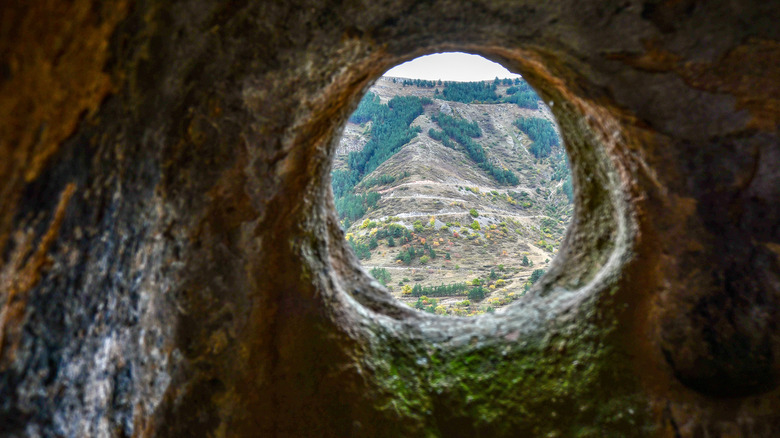
Askolds/Getty Images
The title for the deepest known cave in the world goes to Veryovkina in Abkhazia, Georgia, and this depth is part of what makes the cave so dangerous. Hazards such as falls, low temperatures, and flooding make Veryovkina a true contender on this list.
The cave is also prone to deadly floods. Even a little rain dripping through the numerous tunnels can quickly add up in the lower depths of the cave system, but the real danger is in the collection of these waters in underground water sources known to blast upward into the cave on short notice. If we blend that with the ease at which explorers can lose their way, the limited contact capabilities from within the cave, and the difficulties in exiting what is a four descent to the depths, a downpour can turn deadly in an instant. This has happened before. In 2018, a group of cavers working on a photography project of Veryovkina were met with torrential waters blasting through the cave tunnels, shaking the walls so heavily it must’ve felt like an impending collapse. Luckily, the explorers made it out in cliche fashion – that is, just at the nick of time.
A Russian caver who broke safety rules by exploring the Veryovkina alone in 2020 wasn’t as lucky as the previous group. He died from a combination of a serious fall and hypothermia, and due to the sheer size of the cave system, his body wasn’t discovered for nine months.
Naica Mine, Mexico
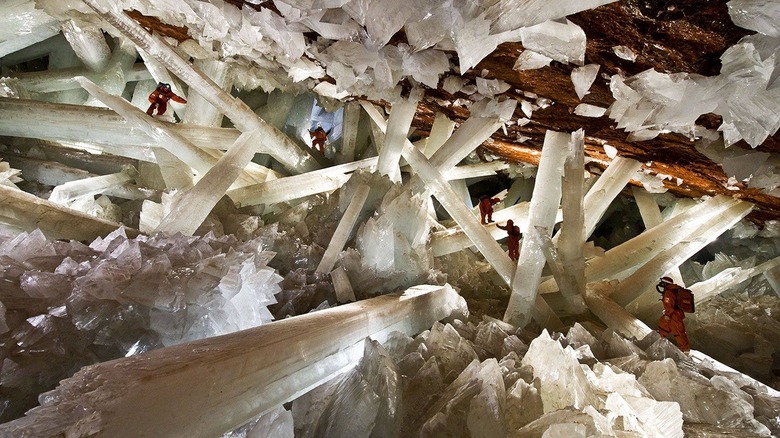
Successful Flow / Facebook
Naica Mine in Chihuahua, Mexico, is truly one of the most stunning sights on planet Earth. The cavern sits like a pocket forgotten to time 1,000 feet below the Chihuahua ground, and it’s a place few dare to venture, even though it might be a dream to many. And it certainly looks like a dream.
You may have seen pictures of Naica Mine before. This spectacular cave is filled with gigantic gypsum crystals, some as tall as a house and many larger than a man. The cave is a place of alien beauty and a deadly environment. To begin with, the gypsum can be razor sharp, turning a trip, stumble, or fall into a deadly accident, but that’s only a small part of the danger. Special respirators are required because of the acidic pH of the air inside the cavern, and specialty suits filled with ice are needed to spend a maximum of 40 minutes exploring the cave due to the obscene temperatures inside. With temperatures around 120 degrees Fahrenheit and constant high humidity, unprepared explorers could easily suffer heat-related illnesses. That’s if the air and crystals didn’t get them first.
Gorner Glacier Cave, Switzerland
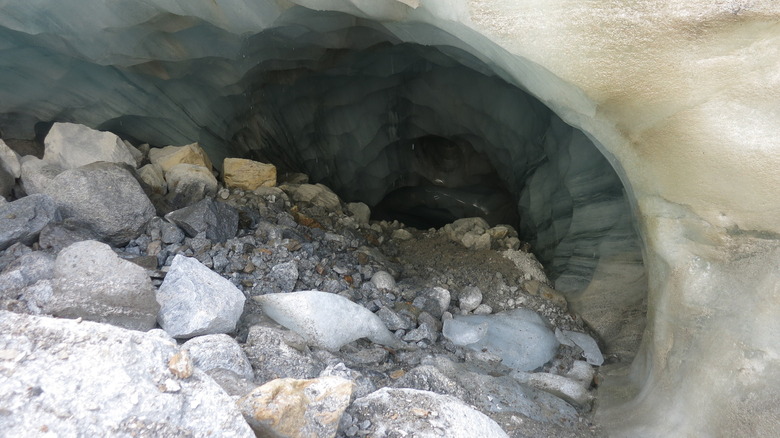
High View/Shutterstock
The caves in Gorner Glacier, one of the largest glaciers in the Swiss Alps, are large cavernous tunnels bored through millennia of ice melt. They’re quite pretty, as most of the dangerous places on this list are, with walls of blue-white ice that look like something out of an icy winter film or horror movie, depending on how you look at it. With the potential for rock and ice falls, collapse, and rapid melting, it just might be the latter.
There’s a common theme with glacier caves: They were once much safer to visit. Unfortunately, human-driven climate change has messed that up for everyone. Glacial caves, and glaciers in general, become more unstable as global average temperatures rise. In the case of Gorner Glacier in Valais, Switzerland, which has receded around half a mile in the past 50 years, it’s been hit pretty hard, and it’s expected to be almost entirely gone by the end of this century. That doesn’t look particularly good for the caves in the glacier since rapidly melting ice isn’t exactly the most structurally sound substance out there. In fact, you should probably think twice before entering the Gorner Glacier caves at all since, even if you might not experience a cave-in or dangerous falling ice and rock, you very well might be exploring on a natural slip-and-slide.
Cueva de la Muerte, Costa Rica
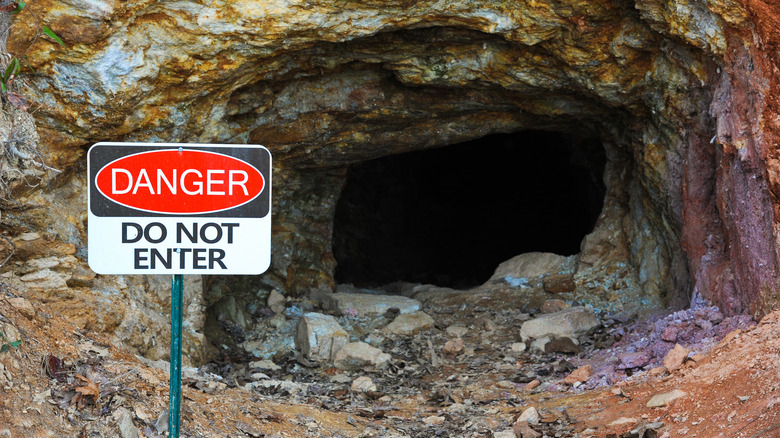
Mark Winfrey/Shutterstock
When it comes to dangerous caves, there are those that are potentially dangerous because of probable hazards and those that are patently deadly. Cueva de la Muerte (The Cave of Death) in Recreo Verde, Costa Rica, is one of the deadly ones. It’s a geology thing.
Cueva de la Muerte is naturally occurring in a newer outcropping of volcanic rock, and due to its position and composition, the atmosphere inside the cave is nearly entirely carbon dioxide. If you were to wriggle through the small opening into the cave, there’d be a high chance you’d suffocate. Don’t worry, though; this isn’t a cave you’re going to accidentally wander into. The outside of the cave is covered in warning signs and images of skulls to ward off that kind of thing. Unfortunately, it doesn’t help animals from wandering to their demise.
Many of the caves on this list are beautiful, and it’s almost sad that they can’t be viewed by the public, but Cueva de la Muerte isn’t nearly as wondrous as it’s only around 10 feet long.
Dark Star Cave, Uzbekistan
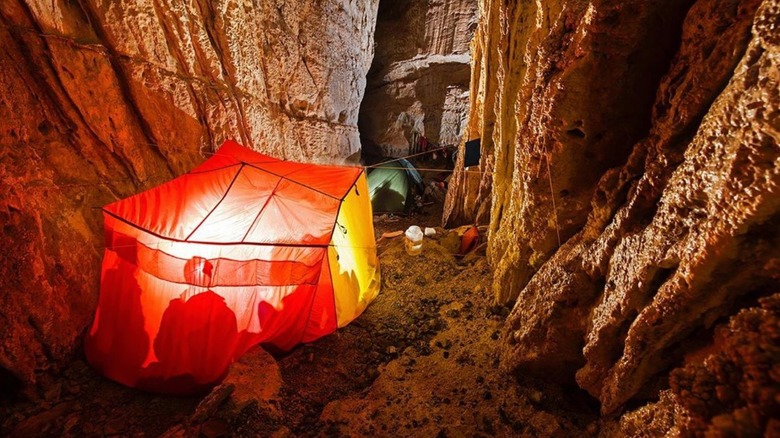
Robbie Shone/Roundhouse Works/Facebook
Known as the “Everest of Caves,” Dark Star Cave in Boysuntov Range, Uzbekistan, is one of the most massive cave systems in the world, reaching around 3,000 feet below the ground and giving Veryovkina a run for its money.
As you might expect from a cave system so big, it’s dark. Really dark. The light from the surface is mostly absorbed and diffused by the time you get into the lower cave, leaving you in total darkness. And though the caves have been fully mapped, unless you’re a professional with deep knowledge of Dark Star, there’s a good chance of getting lost in the twisting labyrinth. Your usual navigation devices won’t work with that much natural insulation between you and the cell towers and satellites that provide your position data, and if you run out of battery power for your flashlight, you’ll be left entirely blind. Something about starving inside a miles-long stone coffin doesn’t sound very pleasant, so it’s best to leave the Dark Star Cave excursions to the professionals.
Sulphur Cave, United States
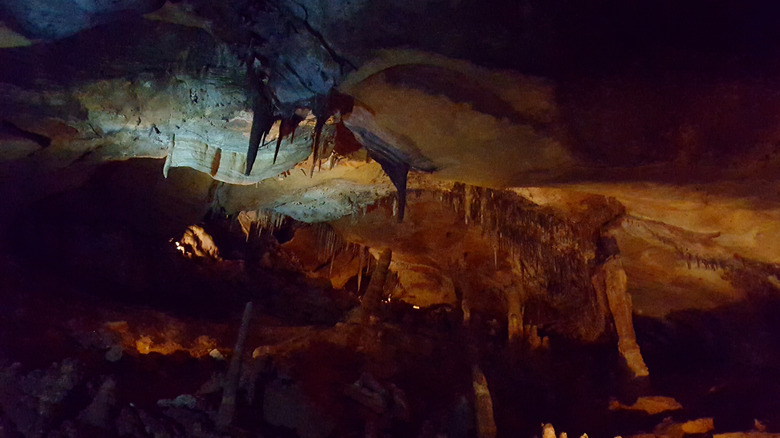
Pierre-olivier Valiquette/Getty Images
Another dangerous gas-filled cave is Sulphur Cave in Steamboat Springs, Colorado. This cave is immensely fascinating. For one, due to the isolated nature of this cave, it contains worms found nowhere else in the world. It was also supposedly used for executions by the Ute tribe of Indigenous Americans, and the gasses inside Sulphur Cave would be perfectly suited for it.
The air in the cave is made of three gasses that are deadly in large concentrations: Carbon dioxide can suffocate you, carbon monoxide is odorless and deadly poisonous, and hydrogen sulfide can lead to unconsciousness and death after only a handful of breaths. Even if the gasses didn’t kill an unsuspecting explorer immediately, they’d likely leave them unconscious before they understood they were being poisoned, which would surely end in their deaths. Even people wearing gas masks have succumbed to the toxic illness after entering the cave. The best thing to do is stay out of the cave unless you’re a specially trained researcher.
Bufadero Cave, Canary Islands
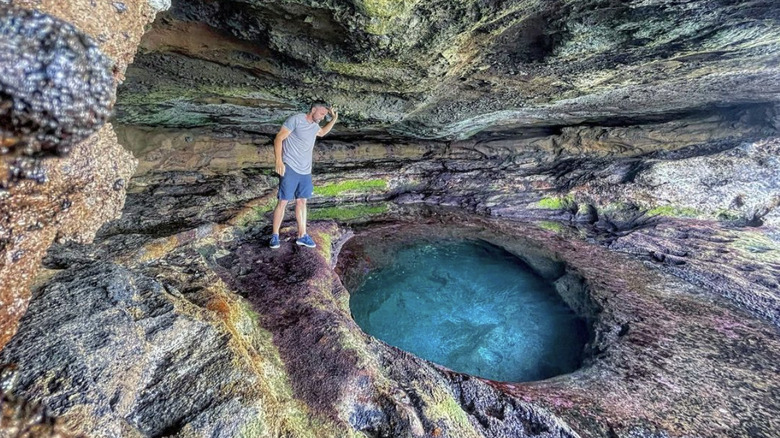
noahrubio/Instagram
Bufadero Cave in the Canary Islands is a picturesque cavern, a little getaway from the summer sun, or, at least, that’s how it appears when the waters are calm. The cave is actually off-limits to the general public and has been listed as permanently closed. But being listed as closed doesn’t keep daredevils from trespassing and putting themselves in mortal danger.
Bufadero Cave isn’t dangerous at all times of the day. Instead, the danger is a lurking one, waiting for victims who are uninformed and unsuspecting. Bufadero becomes deadly when victims don’t understand how the tides behave inside the cave and at what times the tides fluctuate. When the cave is at low tide, it’s a beautiful cavern filled with jagged rocks that turn deadly when the tide washes in with a vengeance. “Vengeance” is an excellent word to describe it. Tidal changes inside the cave have cost the lives of several people over the years as they blast the cave with powerful waves capable of knocking victims into the rocks, turning a chill hangout into a truly deadly locale.
Cenotes, Mexico
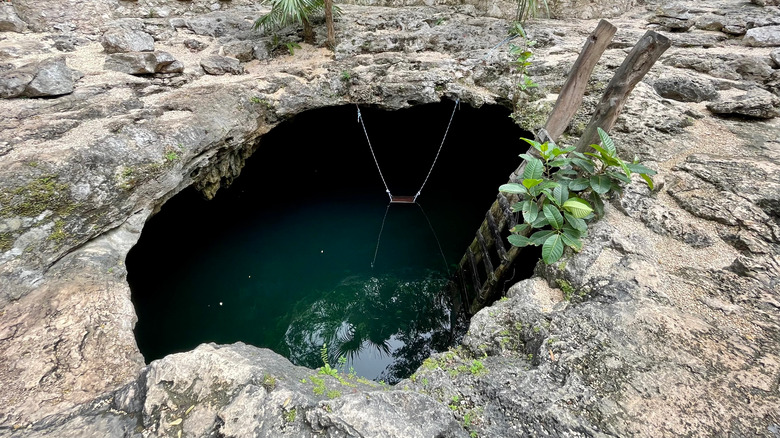
Mala Iryna/Shutterstock
The cenotes in Mexico are sinkholes that often open into underwater caves and caverns. Many are filled with water and are popular swimming spots throughout Yucatán and other parts of the country. It makes sense because many of these cenotes are absolutely gorgeous wells of crystal clear green or blue water, and though you’d think being able to see through the water into the caverns below (for those that have them) would prevent accidents, that doesn’t seem to be the case.
Several people have died in cenotes over the years. Just looking over the past few years, a teenager drowned in Cenote Azule in 2021. Then, in 2022, a man drowned saving his daughter in a different cenote in Tulum. Another death in Cenote Azule happened in 2023 after a tourist dove into the water and sustained a head injury. If these deaths aren’t enough to dissuade you from hanging out in the cenotes, authorities have discovered that many of these popular cavern swimming spots carry E. coli. The dangers abound.
Krubera Cave, Georgia
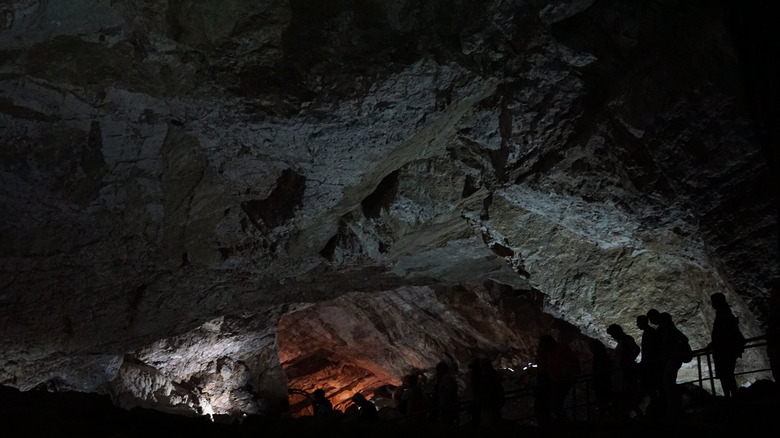
Sasha Mordovets/Getty Images
Krubera Cave is known as the second deepest cave in the world, having held the title before the mapping of its nearby cousin Veryovkina, and contains many of the same dangers as the number one. The cave dives over a mile down, and the passages span over 8 miles in total length. The entire cave system is a variable maze designed by Mother Nature to swallow up those who get in over their heads.
The possibility of ill-prepared cavers getting lost in this cave system is as immense as the cave system itself. Like many deep caves, the air isn’t particularly warm and dry, which can cause issues on its own. Sumps in the cave are filled with frigid water, which could easily cause hypothermia with even the smallest hole in your drysuit. There are narrow passageways, some in dry tunnels and others completely submerged in water, begging for divers to get stuck, and deep caverns that require talent in repelling that likely isn’t part of a beginner’s repertoire. And just like Veryovkina, Krubera is prone to floods from the water tables beneath. In other words, this cave is best left to the professionals.
Mammoth Cave, United States
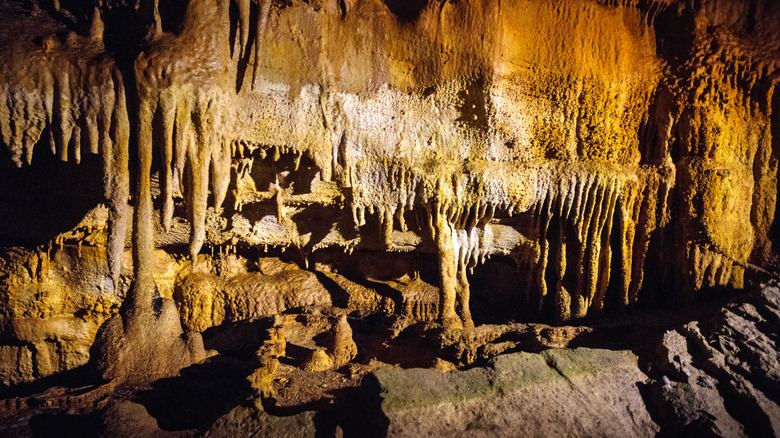
Zrfphoto/Getty Images
Mammoth Cave in Kentucky is the longest known cave system in the world, measuring over 400 miles in total length, which sounds insane, but it’s true. Surprisingly, tourists are relatively safe in Mammoth Cave if they stick to the designated areas, but the lower, more difficult portions of the cave aren’t particularly safe for anyone. They would be best left to those with ample experience and training.
Larger, deeper cave systems, like Mammoth and the Georgian caves on this list, run into similar hazardous issues. Since caves are so dark, improperly geared explorers will find themselves battling the dark and cold for survival. One misstep could leave them lost for the rest of their lives, and without food, water, and warmth, that might not be very long. Then, Mammoth Cave, as well as the other deep cave systems, have the added hazard presented by rapid flooding, which could overtake even the most experienced caver if they take even a single wrong turn during a rapid escape from rising groundwater.

